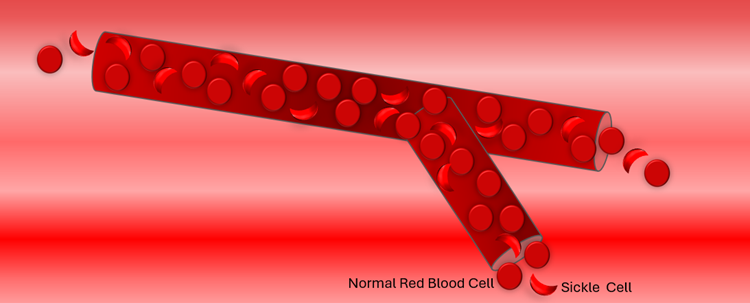CGT (Cell and Gene Therapy) Program – Sickle Cell

Image Credit: C Wolbrecht
CMS has introduced a Quality-Based Gene Therapy for Sickle Cell Patients Program, also known as the Cell and Gene Therapy (CGT) Access Model.
What is CGT Program?
The CGT Access Model is a federal initiative by CMS to expand access to high-cost, potentially curative gene therapies for Medicaid beneficiaries with sickle cell disease (SCD). It is a voluntary, outcomes-based reimbursement model that includes 33 states, D.C., and Puerto Rico
- Goal: Improve access to transformative therapies while tying payment to clinical outcomes.
- Focus: Initially targets FDA-approved gene therapies for SCD, such as Casgevy™ (exagamglogene autotemcel) and Lyfgenia™ (lovotibeglogene autotemcel)
Who Qualifies for CGT?
To qualify for gene therapy under this model, a patient must:
- Have a documented diagnosis of sickle cell disease.
- Be enrolled in Medicaid or CHIP in a participating state.
- Have Medicaid as the primary payer.
- Receive therapy from a participating manufacturer.
- Meet standardized prior authorization criteria.
Providers may participate in the program without enrolling, as enrollment is only required for patients.
Medical Necessity for CGT
In addition to the qualifications above, the patient must also meet clinical conditions as well. The patient must be:
- Age 12 or older.
- ≥4 severe vaso-occlusive crises in the past 2 years.
- Failure or intolerance to hydroxyurea.
- Ineligible for allogeneic stem cell transplant due to lack of donor.
- No serious comorbidities or prior gene therapy.
What are the Benefits?
Gene therapies potentially offer curative outcomes:
- Elimination or significant reduction in painful vaso-occlusive crises.
- Improved hemoglobin levels and reduced need for transfusions.
- Increased life expectancy and quality of life
- Avoidance of immune complications associated with donor transplants.
- Coverage for fertility preservation, travel, behavioral health, and case management
What are the Risks?
Patients with more severe symptoms are more likely to accept the risks and pursue gene therapy, while those with milder symptoms may weigh alternatives.
- Chemotherapy-Related Risks
Before receiving gene-modified stem cells, patients undergo conditioning chemotherapy to prepare the bone marrow. This phase carries several risks
- Infertility (common and often permanent)
- Hair loss
- Mouth ulcers
- Nausea and vomiting
- Increased risk of infection due to low white blood cell counts
- Bleeding complications
Patients are closely monitored in protective environments during this phase to reduce infection risk.
- Cancer Risk
There is a small but serious risk that the gene therapy vector (used to modify stem cells) could unintentionally activate nearby cancer-causing genes
This risk is still being studied, and long-term follow-up is essential.
- Failure of Therapy
Gene therapy may not work due to several reasons.
- Insufficient stem cell collection
- Modified cells deemed unsafe for infusion
- Failure to reduce sickled hemoglobin levels
In such cases, patients may be removed from the study and revert to standard care.
- Unanticipated Side Effects
Patients have reported concerns about unknown or long-term side effects, including:
- Organ damage not reversed by therapy
- Fatigue or pain persisting post-treatment
- Psychosocial challenges (identity shifts, emotional adjustment)
- Financial Toxicity
Even though gene therapy may be cost-effective long-term, patients worry about:
- Upfront costs (often exceeding $2 million)
- Uncovered expenses (housing, fertility preservation, caregiver support)
- Long-term financial burden
6. Other Considerations
- Fertility preservation is recommended before treatment.
- Carrier status remains unchanged—patients can still pass the sickle cell gene to their children
- Follow-up care is extensive, often lasting 15 years to monitor long-term effects.
CPT/HCPCS Codes
Prior authorization will be required for exagamglogene autotemcel (Casgevy) (procedure code J3392) and lovotibeglogene autotemcel (Lyfgenia) (procedure code J3394).
Prior authorization requests for exagamglogene autotemcel (Casgevy) (procedure code J3392) and lovotibeglogene autotemcel (Lyfgenia) (procedure code J3394) must be submitted using the Special Medical Prior Authorization (SMPA) Request Form.
- CPT Codes:
- 38206 – Stem cell collection
- 38207 – Processing of stem cells
- 38208 – Cryopreservation
- 38240 – Transplantation of stem cells
- HCPCS Codes:
- J3392 – Casgevy™
- J3394 – Lyfgenia™
- Q-codes may be assigned in the future for specific therapies.
- ICD-10-CM: D57.0–D57.8 (Sickle-cell disorders)
- NDCs: Specific to the therapy and manufacturer
How are they reimbursed?
- Medicaid & Medicare are joining forces under this model to offer outcomes-based reimbursement.
- CMS negotiates volume-based discounts and rebates with manufacturers.
- States may receive up to $10 million in support for implementation, including provider contracting, data collection, and patient support
- Medicare may reimburse up to 75% of the therapy cost during the “newness” period
Key Takeaways
The CMS Cell and Gene Therapy (CGT) Access Model represents a groundbreaking federal initiative to expand Medicaid access to high-cost, potentially curative gene therapies for sickle cell disease. By linking reimbursement to clinical outcomes, the program aims to improve patient access, ensure cost-effectiveness, and support long-term health benefits. While therapies like Casgevy™ and Lyfgenia™ offer transformative potential, they also carry significant risks and financial considerations. Providers and patients must navigate stringent eligibility criteria, prior authorization requirements, and long-term follow-up commitments to participate in this outcomes-based model.
Resources:
TMHP – Sickle Cell Disease Gene Therapy Coverage Information | TMHP
Texas Children’s – Cell Therapy and Bone Marrow Transplant | Texas Children’s
CGT – Cell & Gene Therapy | This is CGT
MED.00146 Gene Therapy for Sickle Cell Disease – Anthem
CODING AND BILLING GUIDE – CASGEVY
BILLING & CODING GUIDE – LYFGENIA